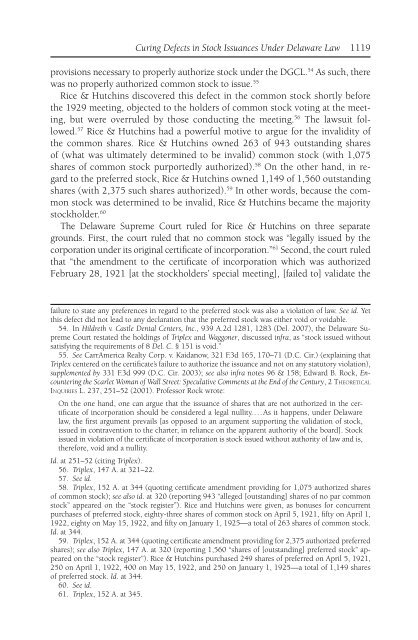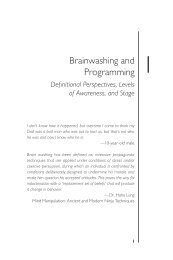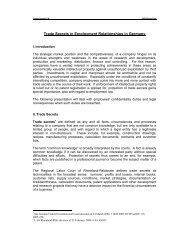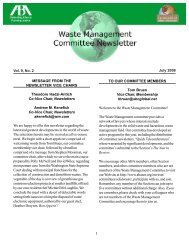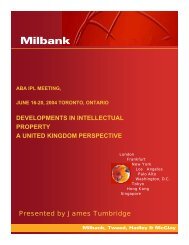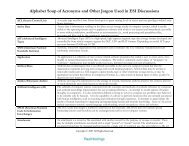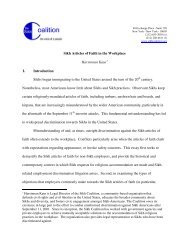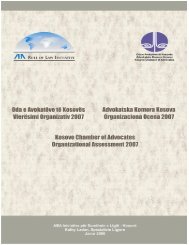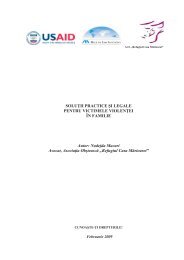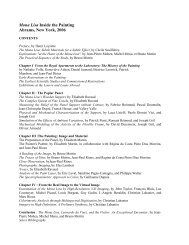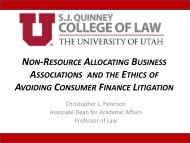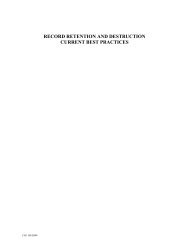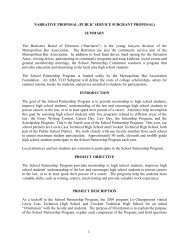Curing Defects in Stock Issuances - American Bar Association
Curing Defects in Stock Issuances - American Bar Association
Curing Defects in Stock Issuances - American Bar Association
You also want an ePaper? Increase the reach of your titles
YUMPU automatically turns print PDFs into web optimized ePapers that Google loves.
<strong>Cur<strong>in</strong>g</strong> <strong>Defects</strong> <strong>in</strong> <strong>Stock</strong> <strong>Issuances</strong> Under Delaware Law 1119<br />
provisions necessary to properly authorize stock under the DGCL. 54 As such, there<br />
was no properly authorized common stock to issue. 55<br />
Rice & Hutch<strong>in</strong>s discovered this defect <strong>in</strong> the common stock shortly before<br />
the 1929 meet<strong>in</strong>g, objected to the holders of common stock vot<strong>in</strong>g at the meet<strong>in</strong>g,<br />
but were overruled by those conduct<strong>in</strong>g the meet<strong>in</strong>g. 56 The lawsuit followed.<br />
57 Rice & Hutch<strong>in</strong>s had a powerful motive to argue for the <strong>in</strong>validity of<br />
the common shares. Rice & Hutch<strong>in</strong>s owned 263 of 943 outstand<strong>in</strong>g shares<br />
of (what was ultimately determ<strong>in</strong>ed to be <strong>in</strong>valid) common stock (with 1,075<br />
shares of common stock purportedly authorized). 58 On the other hand, <strong>in</strong> regard<br />
to the preferred stock, Rice & Hutch<strong>in</strong>s owned 1,149 of 1,560 outstand<strong>in</strong>g<br />
shares (with 2,375 such shares authorized). 59 In other words, because the common<br />
stock was determ<strong>in</strong>ed to be <strong>in</strong>valid, Rice & Hutch<strong>in</strong>s became the majority<br />
stockholder. 60<br />
The Delaware Supreme Court ruled for Rice & Hutch<strong>in</strong>s on three separate<br />
grounds. First, the court ruled that no common stock was “legally issued by the<br />
corporation under its orig<strong>in</strong>al certifi cate of <strong>in</strong>corporation.” 61 Second, the court ruled<br />
that “the amendment to the certifi cate of <strong>in</strong>corporation which was authorized<br />
February 28, 1921 [at the stockholders’ special meet<strong>in</strong>g], [failed to] validate the<br />
failure to state any preferences <strong>in</strong> regard to the preferred stock was also a violation of law. See id. Yet<br />
this defect did not lead to any declaration that the preferred stock was either void or voidable.<br />
54. In Hildreth v. Castle Dental Centers, Inc., 939 A.2d 1281, 1283 (Del. 2007), the Delaware Supreme<br />
Court restated the hold<strong>in</strong>gs of Triplex and Waggoner, discussed <strong>in</strong>fra, as “stock issued without<br />
satisfy<strong>in</strong>g the requirements of 8 Del. C. § 151 is void.”<br />
55. See CarrAmerica Realty Corp. v. Kaidanow, 321 F.3d 165, 170–71 (D.C. Cir.) (expla<strong>in</strong><strong>in</strong>g that<br />
Triplex centered on the certifi cate’s failure to authorize the issuance and not on any statutory violation),<br />
supplemented by 331 F.3d 999 (D.C. Cir. 2003); see also <strong>in</strong>fra notes 96 & 158; Edward B. Rock, Encounter<strong>in</strong>g<br />
the Scarlet Woman of Wall Street: Speculative Comments at the End of the Century, 2 THEORETICAL<br />
INQUIRIES L. 237, 251–52 (2001). Professor Rock wrote:<br />
On the one hand, one can argue that the issuance of shares that are not authorized <strong>in</strong> the certifi<br />
cate of <strong>in</strong>corporation should be considered a legal nullity. . . . As it happens, under Delaware<br />
law, the fi rst argument prevails [as opposed to an argument support<strong>in</strong>g the validation of stock,<br />
issued <strong>in</strong> contravention to the charter, <strong>in</strong> reliance on the apparent authority of the board]. <strong>Stock</strong><br />
issued <strong>in</strong> violation of the certifi cate of <strong>in</strong>corporation is stock issued without authority of law and is,<br />
therefore, void and a nullity.<br />
Id. at 251–52 (cit<strong>in</strong>g Triplex).<br />
56. Triplex, 147 A. at 321–22.<br />
57. See id.<br />
58. Triplex, 152 A. at 344 (quot<strong>in</strong>g certifi cate amendment provid<strong>in</strong>g for 1,075 authorized shares<br />
of common stock); see also id. at 320 (report<strong>in</strong>g 943 “alleged [outstand<strong>in</strong>g] shares of no par common<br />
stock” appeared on the “stock register”). Rice and Hutch<strong>in</strong>s were given, as bonuses for concurrent<br />
purchases of preferred stock, eighty-three shares of common stock on April 5, 1921, fi fty on April 1,<br />
1922, eighty on May 15, 1922, and fi fty on January 1, 1925—a total of 263 shares of common stock.<br />
Id. at 344.<br />
59. Triplex, 152 A. at 344 (quot<strong>in</strong>g certifi cate amendment provid<strong>in</strong>g for 2,375 authorized preferred<br />
shares); see also Triplex, 147 A. at 320 (report<strong>in</strong>g 1,560 “shares of [outstand<strong>in</strong>g] preferred stock” appeared<br />
on the “stock register”). Rice & Hutch<strong>in</strong>s purchased 249 shares of preferred on April 5, 1921,<br />
250 on April 1, 1922, 400 on May 15, 1922, and 250 on January 1, 1925—a total of 1,149 shares<br />
of preferred stock. Id. at 344.<br />
60. See id.<br />
61. Triplex, 152 A. at 345.


